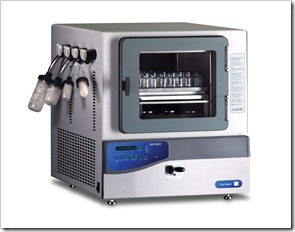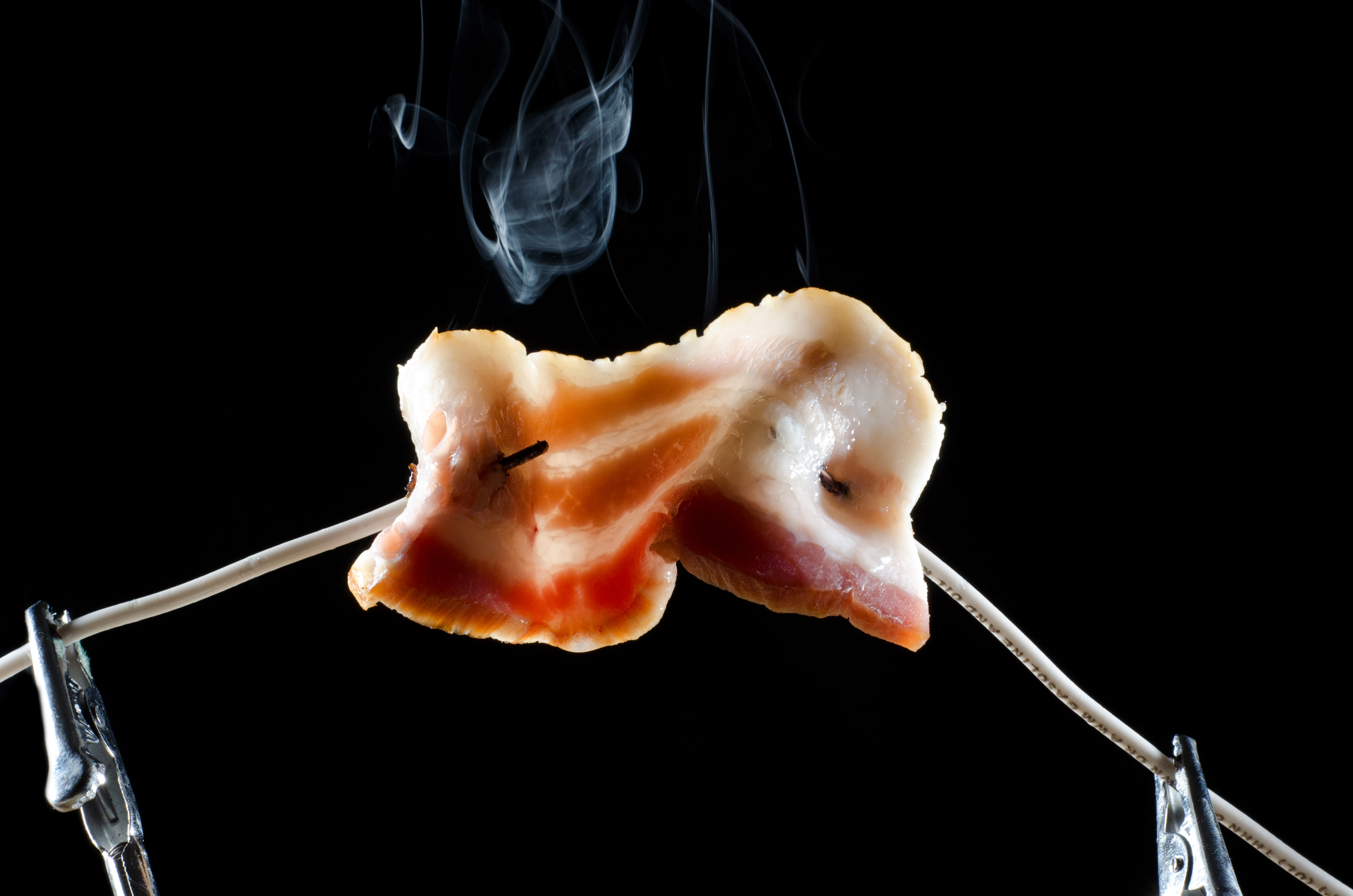I think we can agree that by now we all expected to fly around in jetpacks and watch porn through a plug in our skull. Unfortunately, those technologies have not yet become commercial, so we’ll have to make due until modern science can sort out its priorities.
In the meantime, I thought I’d share a little prediction. By the year 2020, you’ll be able to purchase the following items anywhere that also carries a George Foreman Grill. These devices are way out there now – only the most adventurous (and well funded) chefs are using them, but they’re headed to a kitchen near you… along with those jetpacks.
![c6blue-080103[1] c6blue-080103[1]](https://seattlefoodgeek.com/wp-content/uploads/2010/08/c6blue0801031.jpg)
What the hell is it?
A centrifuge.
What does it do?
It spins little vials of liquid around really, really fast.
What say the white lab coats?
Centrifuges are used for separating out the parts of a liquid by density. Your doctor probably uses one to separate your blood cells from plasma to, um, look at them and stuff.
You put food in that thing?
Although centrifuges have already been used for years in industrial food processing (separating cream from milk, separating sugar crystals from their mother liquor), they’re just now starting to appear in the geekiest restaurant kitchens. Chefs use centrifuges to clarify stocks, sauces and even lime juice. Even the finest mesh strainer is no match for the separating power of the sedimentation principle, so the next time you’re making consommé consider your centrifuge instead of your chinoise.

What the hell is it?
A rotary evaporator.
What does it do?
It extracts solvents from substances. Kind of like a moonshine still, but designed by robots from the future.
What say the white lab coats?
By creating a vacuum inside the glass chamber, the rotary evaporator reduces the boiling point of a compound liquid. Then, through gentle heating and turning, solvents dissolved in the liquid are evaporated and removed.
You put food in that thing?
Imagine being able to extract the essential flavor from just about anything into a highly-concentrated liquid. Sure, you can go buy mint extract or even rosemary extract (if you know where to look), but what about the essential oil of bacon or saffron? Chicago’s famed Alinea restaurant has been using rotovaps to distill the essential oils from herbs, and even chiles – all flavor, no heat. So, when you’re baking cookies and the recipe calls for vanilla extract, don’t turn to the plastic vial from the grocery store; make your own!
 What the hell is it?
What the hell is it?
It’s a freeze dryer.
What does it do?
It freeze dries, R-tard.
What say the white lab coats?
Freeze drying has all the benefits of freezing, but without those nasty ice crystals. The freeze dryer freezes the materials inside, then creates a vacuum and adds just enough heat so that the water frozen inside the materials converts directly to gas and escapes.
You put food in that thing?
It may not surprise you to hear that freeze dryers are used for culinary applications. After all, this was the space-age piece of technology that brought us Astronaut Ice Cream. But it’s not all about infinite shelf lives and lightweight transportation. Ferran Adrià, often called the best chef in the world, has been freeze drying slices of fruit at his restaurant El Bulli. 10 years from now, when you want to make apple chips and jerky, you won’t be reaching for the dehydrator – you’ll be freeze drying!

I think I remember an episode of The Jetsons talking about these products.
I work in the bio-processing industry, we use large scale versions of this equipment. eg. turning vegetable extract into a soluble powder.
The idea of home kitchen sized process equipment exites me!
How about a counter-top spray drier?
Awesome